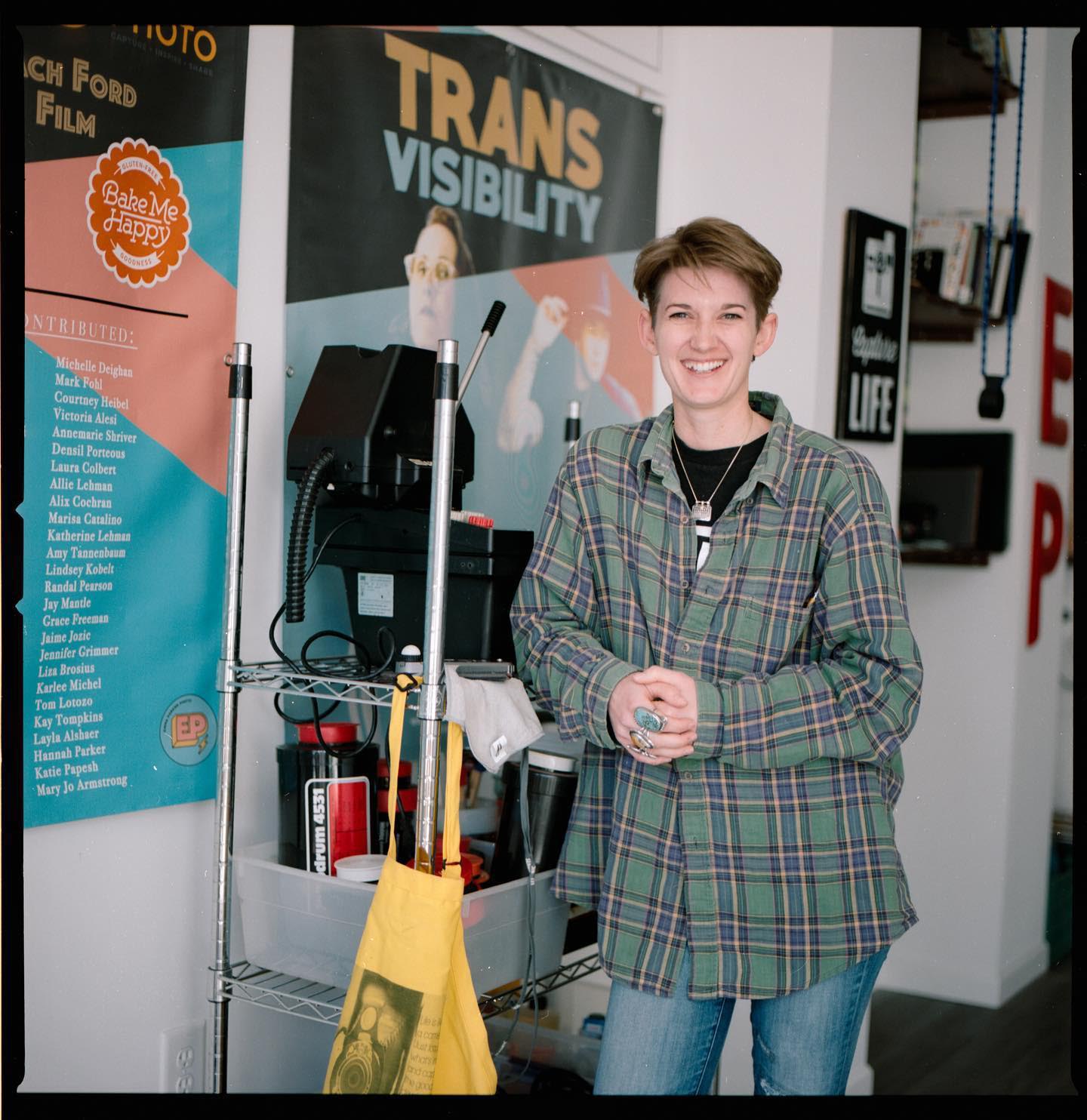How did you get into making art?
Creating art is celebrated in my family. Both my mom, Mary Jo, and sister, Hannah Parker, are creators. One of my mom’s favorite stories of me at four years old is her having to ask me to scrub off my masterpiece of crayon on our large white garage door. We didn’t grow up having coloring books encouraging us to color “within the lines.” Instead, we had our own drawing books and were encouraged to use our imagination. We would often create our own art using “friendly plastic” while sitting on the deck at our cabin in Southern, Ohio. Art is in our blood.


What are you currently working on?
Currently, I am discovering ways to develop, process, and scan my own E100, C41 and B&W 35mm & 120 mm film with the Trans Visibility Project. The Trans Visibility Project is about uplifting and creating space for Trans & Non-Binary Folks. This photo series taken on my medium format hasselbad camera has helped spread awareness and provide space for the Trans and Non-Binary community. It’s brought families, friends, chosen families, and new connections together in the community. The continued pushback against trans and Non-Binary rights in our society shows me the importance of a photo series such as this. We fear what we don’t understand, and I will continue as a photographer to try and figure out how I can help my LGBTQIA+ community.
In a year where we’ve seen a lot of growth socially, it’s my hope that we can keep moving forward and affect more meaningful change each and every day.
Emma Parker

What inspired you to get started on this body of work?
It started with me opening my own photography studio in Columbus, Ohio. With the excitement of a new studio space and new energy, it feels so right that this project should be about welcoming one of the most marginalized communities and making them VISIBLE. This is all about #TransVisibility. #TransRights are so much more than bathrooms and pronouns, they are human rights. It’s so important that they represent themselves through telling their story and that we listen. In a year where we’ve seen a lot of growth socially, it’s my hope that we can keep moving forward and affect more meaningful change each and every day.
I’ve invited some amazing souls into the studio and shot their portraits in an attempt to give them a platform to use their voices. We’ve made some magic. It’s been such a humbling experience to work with these beautiful individuals. Each of them has such a profound story that they all need to be shared. Continuing this project has given me the goal to capture 100 folks on film all across the United States.

Do you work on distinct projects or do you take a broader approach to your practice?
Working on distinct projects helps keep me grounded and focused. Typically, I’m running a mile a minute and there is still so much I want to do and try, so having certain projects created and trying to follow through is something I am most proud of at the moment.

What’s a typical day like in your studio?
Lighting Nag Champa incense, opening all the doors for the fresh air, making some coffee, selecting a record, grabbing the paper, watering the plants, creating a list of what needs to be done, and saying hello to my neighbors.
My studio is located on a busy street with people coming and going. They know my studio is a safe and inclusive space, so people are always popping in. Typically, I have some neighborhood kids stop in who know I have a drawer full of chalk and creative supplies, a basketball hoop, and a double-dutch jump rope.
There are many long hours spent at the studio. My person, Taylor Kiehl, calls it my “apartment.” I like to think of it as a place to be creative and just be.
Who are your favorite artists?
I’m not someone who can name drop anyone in particular but I draw inspiration from painters, musicians, athletes, photographers, and political revolutionist.
Where do you go to discover new artists?
I read, listen to music, go to art shows, concerts, and have coffee talk with creative humans in the community.
Learn more about the artist by visiting the following links:






































































